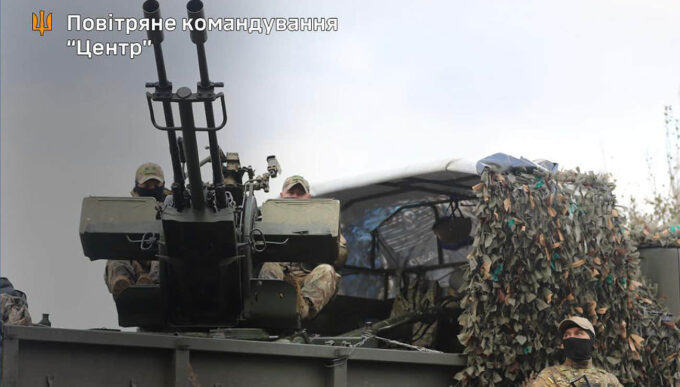On the night of May 25, Ukrainian defense forces faced a significant test of resilience, as the enemy conducted the largest air strike since the beginning of the year

According to the Ukrainian Air Forces, that night Russian troops employed nearly 370 air attack weapons, including a substantial number of missiles and unmanned aerial vehicles (UAVs). Overall, more than 9 ballistic missiles were launched during the attack, including series "Iskander-M" and KN-23 missiles, as well as 55 cruise missiles of various types—X-101 and "Caliber". Most of these missiles were fired from strategic bombers Tu-95 and Tu-160, as well as from Tu-22M3 aircraft. Additionally, Russian forces used one X-22 cruise missile launched from a Tu-22M3 and several guided aviation missiles X-59/69. The situation was further intensified by nearly 300 strike drones—UAVs of different types, including Shaheds. Preliminary information from Ukrainian military sources indicates that the air defense forces shot down 45 Kh-101 and "Caliber" cruise missiles, as well as two X-59/69 missiles, thereby reducing the threat level. At the same time, approximately 2 missiles were locally destroyed or lost, and UAVs were neutralized in three directions: east, north, and south. Overall, the air defense units successfully downed 127 UAVs, including Iranian Shaheds used by Russian forces to strike Ukrainian territory. It is especially notable to mention the scale of destruction and the widespread consequences of this attack. The missile and drone strikes damaged most regions of the country. There were reports of hits at 22 different locations, as well as falling debris from downed missiles and strike drones in 15 other areas—many of which caused damage to residential and civilian objects. Military officials also noted that a significant portion of missiles and UAVs were shot down or neutralized in the air and on the ground during their destruction by air defense systems or electronic warfare tools. Specifically, 45 cruise missiles and 266 UAVs were destroyed or suppressed. Ironically, even after the attack, some regions in Ukraine recorded debris falls and damage caused by fragments from intercepted ballistic and cruise missiles, as well as drones. According to military estimates, enemy losses constitute a tactical success for Ukraine: many targets were destroyed, and some missiles and UAVs were eliminated in the air or during attempts to reach their targets. Early data suggest that the enemy is trying to create maximum tension and force Ukrainian defenders to act under high alert and limited time, thus attempting to compensate for significant losses in other sectors of the front. This night once again demonstrated how tense and dangerous the air situation is, with Ukrainian air defense showing remarkable resilience and capability to withstand enemy aggression even under the most difficult conditions. At the same time, the consequences of these launches will be felt in the affected regions for a long time to come, as a result of the massive Russian strikes.

